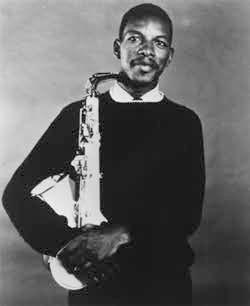
When Obama takes office in January of 2009, it will be a half-century since Free Jazz forefather Ornette Coleman dropped the provocatively titled “The Shape of Jazz to Come”. 1959 was a watershed year for jazz music (arguably the greatest single year for jazz in all history–which is saying a LOT). Here’s a taste: Miles Davis “Kind of Blue”, John Coltrane “Giant Steps”, Charles Mingus “Ah Um”. That is like the holy trinity of jazz music; all from the same year. But in the not-so-silent shadows a young, relatively unknown alto saxophonist was poised to fire the musical shot heard ’round the world–a shot that still reverberates today. “Kind of Blue” is correctly celebrated for establishing modal music, and a genuine evolution from bop and post-bop; “Giant Steps” is the apotheosis of the “sheets of sound” that John Coltrane had been practicing and perfecting for a decade; “Ah Um” is an enyclopedic history of jazz music, covering everyone and everything from Jelly Roll Morton to Duke Ellington. And each of those albums were immediately embraced, and remain recognized as genuine milestones today. But “The Shape of Jazz to Come” was incendiary and complicated: it inspired as much resistance as it did inspiration. Some folks (Mingus included) bristled that it was all so much sound and fury, signifying…little. But what Coleman (along with trumpet player Don Cherry, bassist Charlie Haden and drummer Billy Higgins–representing as solid a quartet as any that have made music, ever) achieved was, arguably, the most significant advancement since Charlie Parker hit the scene. Of course, Parker was also misunderstood and dismissed when his frenetic, almost incomprehensibly advanced alto saxophone assault began to cause scales to drop from audiences’ eyes–if not their ears. Like any genuine iconoclast of the avant garde, Parker and Coleman were not being new for newness sake; they had to fully grasp and master the idiom before they could transcend it. Tellingly, what was revolutionary and almost confrontational, then, seems rather tame and entirely sensible, now. Of course, it didn’t take 50 years for Coleman to resonate: he not only found his audience, John Coltrane–the all-time heavyweight champion–embraced his compatriot. He endorsed, and, crucially, he imitated. The Book of Revelation that Coltrane’s mid-’60s Impulse recordings comprise did, in many respects, grow directly out of the opening salvo fired by Coleman in ’59.
Coleman’s compositions are nakedy emotional, unabashedly intense, totally human. Like the best jazz music, all of the instruments are communicating. What they are saying are different things, at different times, to different people. That is the power of this music. It was the soundtrack for a truly unique and momentous time in American history. It remains, more so than ever, the soundtrack of now.
1. Congeniality
2. Focus on Sanity
3. Peace
